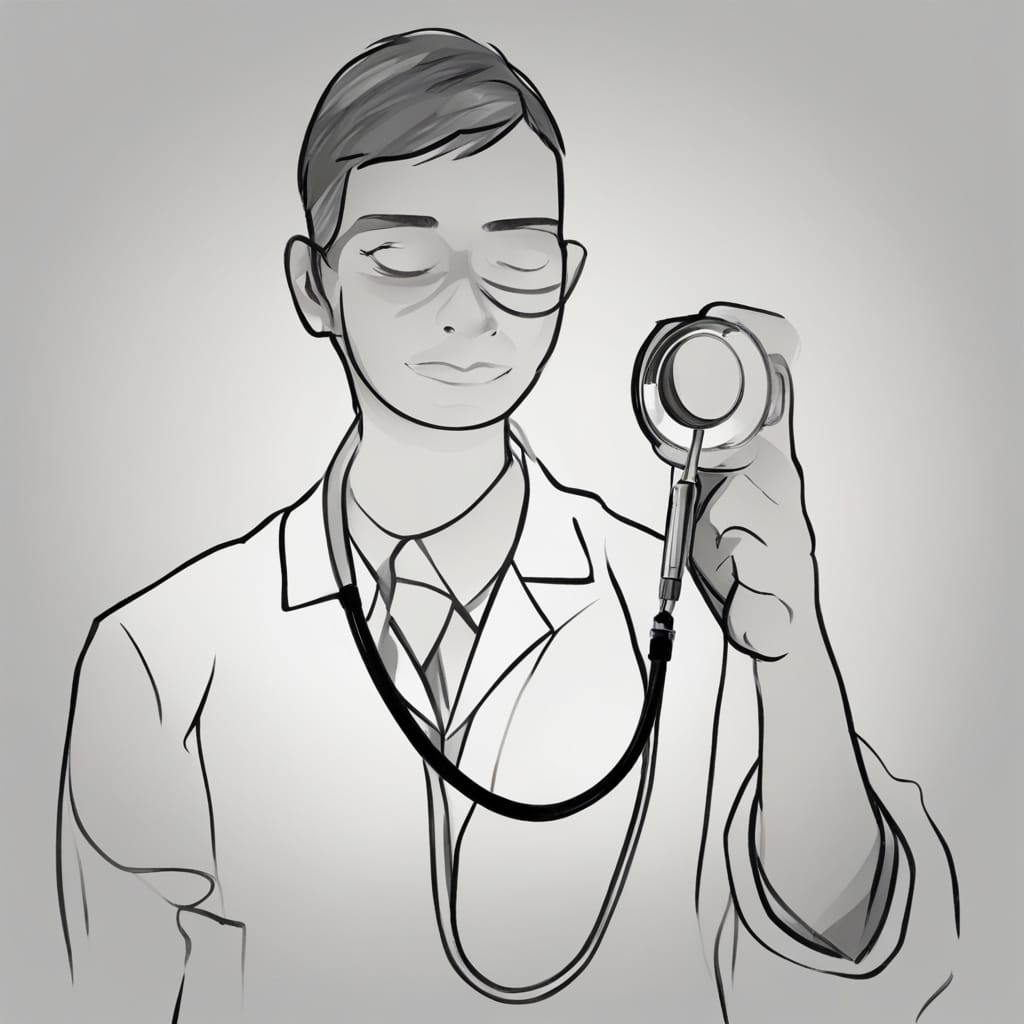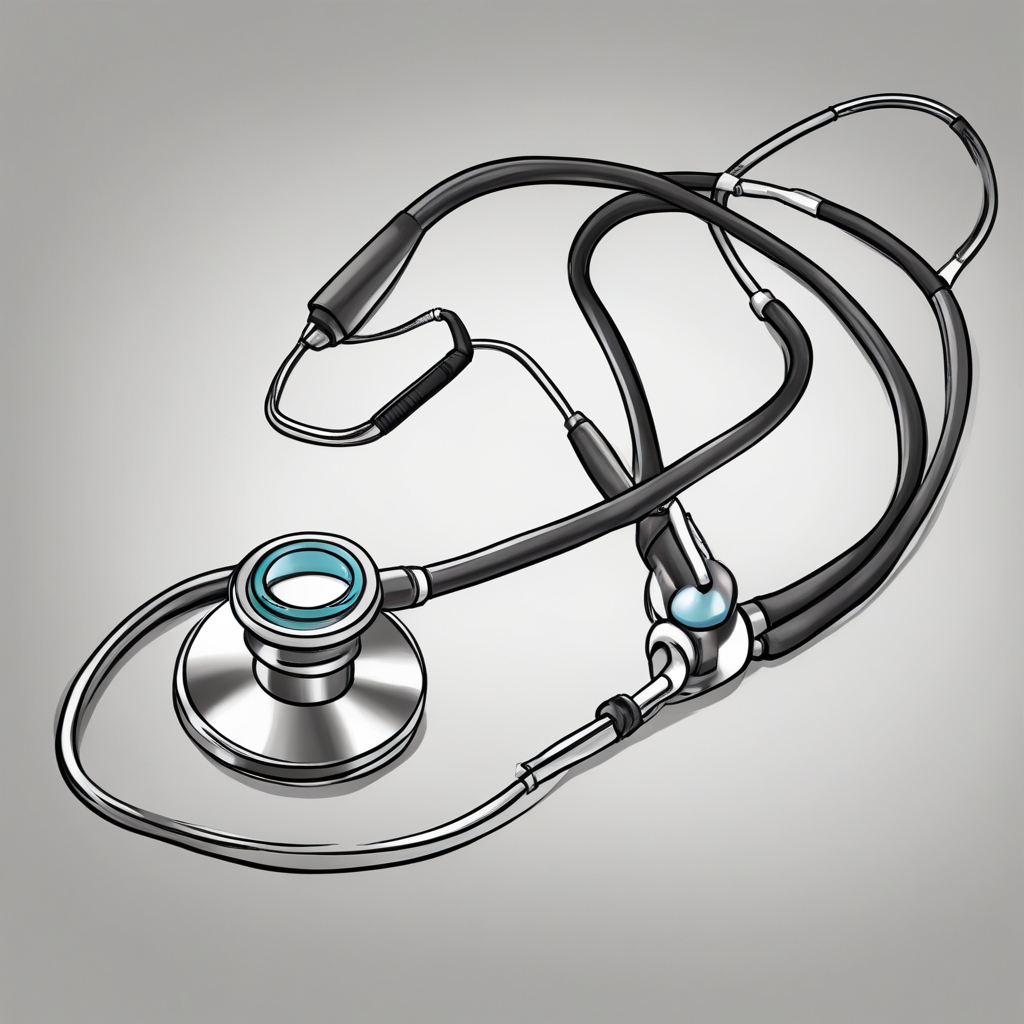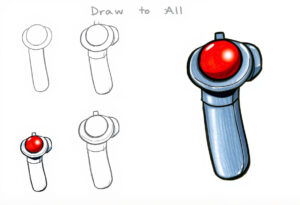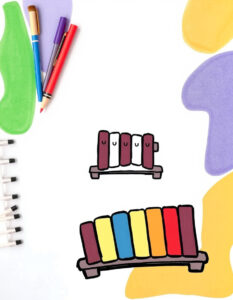A stethoscope is an emblematic representation of medical expertise and healthcare. Depicting a stethoscope can provide a gratifying and enlightening experience for medical students, aspiring artists, and those simply intrigued by the field of medicine. This instructional manual shall expound upon the method for meticulously and precisely sketching a stethoscope, thereby encapsulating this indispensable medical instrument onto a canvas or paper.
Table of Contents
Materials You’ll Need:
Before beginning to design a stethoscope, ensure the following materials are at your disposal:
- Opt for either canvas or paper as the drawing surface of your preference.
- A variety of graphite pencils with varying lead hardnesses (e.g., 2H, H, HB, 2B, 4B) to accommodate a range of shading and line weights.
- Erasers: A standard eraser for more precise line removal and a kneaded eraser for light corrections.
- To establish straight lines and preserve precise proportions, a ruler is utilized.
- Find distinct reference images of stethoscopes to serve as a guide for precision and attention to detail.
Step 1: Study Stethoscope Anatomy
Before you begin drawing, examine the stethoscope’s anatomical structure. Examine the apparatus’s critical elements, such as the earpieces, ducting, chest piece, and diaphragm. Developing an understanding of these particulars will facilitate the production of a lifelike drawing.
Step 2: Start with the Earpieces
Start your stethoscope illustration with a sketch of the earpieces. Typically circular or oval in shape, these are utilized to connect to the conduit. It is imperative to reproduce the dimensions and form of the earpieces precisely.
Step 3: Draw the Tubing
Subsequently, illustrate the stethoscope tubing. Proceed by delineating the main body of the tubing in a straight line, followed by the inclusion of a curved segment to symbolize the flexible segment. Additionally, take note of any visible details on the tubing, in addition to its length and proportions.
Step 4: Add the Chest Piece and Diaphragm
Construct the torso component by drawing it to the tubing. Typically, it is an ovoid or circular component. The diaphragm, a circular, flat surface located on the chest piece, is an essential component for detecting heart and pulmonary sounds. Ensure that you include all essential components, such as the connector of the chest section and the edge of the diaphragm.
Step 5: Include the Tubing Details
Presently, incorporate any pertinent information into the conduit. Tubing for stethoscopes frequently possesses ridges or lines for flexibility and reinforcement. Be mindful of these particulars and integrate them into your artistic creation.
Step 6: Shade and Add Depth
In order to enhance the realism of your stethoscope illustration, you should incorporate shading. Observe the direction of light in your reference image and add highlights and shadows using a variety of pencil grades. Observe the manner in which light interacts with the components of the stethoscope.
Step 7: Fine-Tune and Add Details
Evaluate your drawing and revise it as required. It is imperative to diligently observe the contours, proportions, and any discernible imperfections. You complete the process of refining your stethoscope drawing at this stage.
Step 8: Final Touches
The drawing should be completed with any necessary concluding touches or refinements. Verify that your stethoscope is suitable for use in a medical environment, appears accurate, and is three-dimensional.
Frequently Asked Questions (FAQ’s)
Do I need to be all experienced and stuff to draw a stethoscope like, totally accurately?
No need for any prior art experience, dude. This guide is perfect for artists of all skill levels, and with some practice, anyone can nail drawing a stethoscope.
Where can I find some dope reference images for drawing a stethoscope?
If you’re looking for some sick visuals of stethoscopes, just hit up your favorite search engine and search for “stethoscope images.” You’ll find what you’re looking for in no time! You can find some really good references on medical websites and stock image platforms.
What are some important things to keep in mind when drawing a stethoscope?
Make sure you’re checking out the earpieces, tubing, chest piece, and diaphragm, ya know? Make sure you get their sizes, shapes, and proportions spot on. The tubing details, with all the ridges and stuff, are also super important for making it look real.
How can I give the stethoscope a more realistic appearance in my drawing?
To give your stethoscope some serious depth and dimension, throw in some shading to show how light plays with its components. Check out the reference image to see where the shadows and highlights should go.
Can I spice up my stethoscope drawing with some vibrant hues?
If you’re feeling creative, why not add some color to your drawing of a stethoscope? It’s a fun way to give it a unique and imaginative twist!
What’s the move if I mess up while drawing?
Errors are totally normal when it comes to creating art. Grab your erasers and fix any mistakes or adjustments that need to be made. Just chill and take it easy with your drawing, no rush.
Can I add any other medical tools or elements to my artwork along with the stethoscope?
Totally! You can add in some other medical tools or healthcare-related visuals to make a complete medical-themed artwork.

Conclusion
In conclusion, the process of sketching a stethoscope serves as both an educational and artistic endeavor. This endeavor provides the opportunity to honor this indispensable medicinal instrument while honing one’s artistic abilities. By adhering to this systematic instruction manual, one can fabricate an intricate and authentic depiction of a stethoscope. Your artistic creation, be it a medical illustration, a card of appreciation to a healthcare professional, or a simple medical work of art, shall stand as a testament to the significance of healthcare and the indispensable instrument utilized by such professionals. Delight in the artistic expedition and further delve into the realm of scientific and medical illustrations!
Check out these fun and easy instructions for drawing a skeleton, perfect for getting started! This tutorial simplifies the process, allowing little creators to easily follow along and make their own spooky skeleton drawing!





